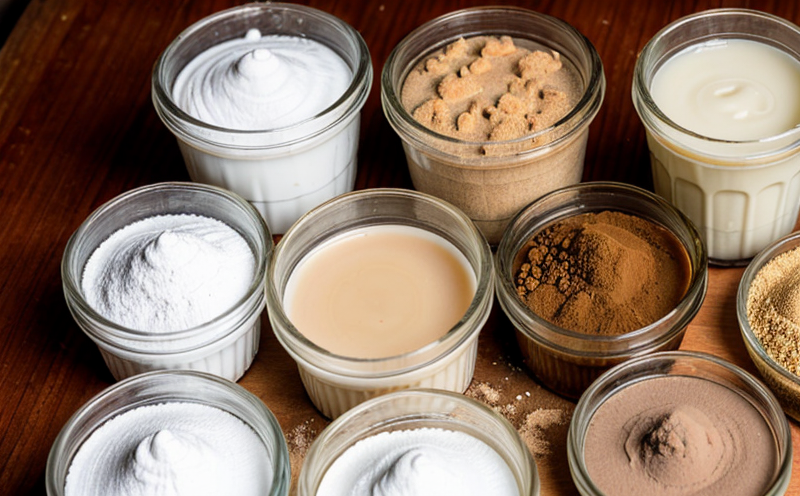ASTM E2617 Standard Test Method for Yeast and Mold in Food by Culture Method
The ASTM E2617 standard test method is a critical procedure used to detect, quantify, and identify yeast and mold species present in food products. This culture-based methodology provides accurate results that are essential for ensuring product safety and quality. Compliance with this standard ensures adherence to international guidelines set forth by organizations such as the World Health Organization (WHO) and Food and Agriculture Organization of the United Nations (FAO).
The test involves inoculating a food sample into appropriate media, incubating it under controlled conditions, and then examining colonies for morphological characteristics indicative of yeast or mold species. This process allows laboratories to generate reliable data on microbial content which can inform decisions regarding product formulation, storage conditions, and packaging.
One key aspect of ASTM E2617 is its emphasis on precision and accuracy in sample preparation and interpretation of results. Properly trained technicians follow stringent protocols outlined within the standard to minimize potential errors that could lead to incorrect conclusions about microbial presence in food products.
The culture method described by this standard offers several advantages over rapid methods when dealing with complex matrices like processed foods or those containing high levels of other microorganisms. By providing detailed information on specific yeast and mold species, it enables more targeted interventions aimed at addressing contamination issues early in the supply chain.
However, it is important to note that while this approach yields valuable insights into the nature of microbial populations present in food products, it does not provide real-time monitoring capabilities. For continuous assessment purposes, complementary techniques may need to be employed alongside ASTM E2617.
Why It Matters
Ensuring the safety and quality of food products is paramount in today’s global market where consumers expect not only delicious meals but also safe ones free from harmful contaminants. Yeast and mold can pose significant risks if left unchecked, leading to spoilage or even health hazards when consumed.
- Prevents contamination leading to product recalls
- Promotes brand reputation through consistent quality assurance
- Aids in regulatory compliance ensuring adherence to international standards
- Supports research and development efforts towards creating safer food products
Benefits
- Enhances product safety by identifying potential sources of contamination early in the process
- Promotes consistent quality through standardized testing procedures
- Facilitates compliance with international regulations and industry best practices
- Saves costs associated with post-market recalls and lawsuits due to contaminated products
International Acceptance and Recognition
The ASTM E2617 standard has gained widespread acceptance across various sectors, including manufacturing, retail, and regulatory bodies worldwide. Its rigorous approach aligns with global standards set by organizations such as the European Union (EU), United States Food and Drug Administration (FDA), and others.
Compliance with ASTM E2617 demonstrates commitment to maintaining high levels of quality assurance which can be leveraged during audits conducted by third-party certifiers or governmental agencies. This recognition enhances trust among stakeholders including consumers, distributors, and investors alike.





